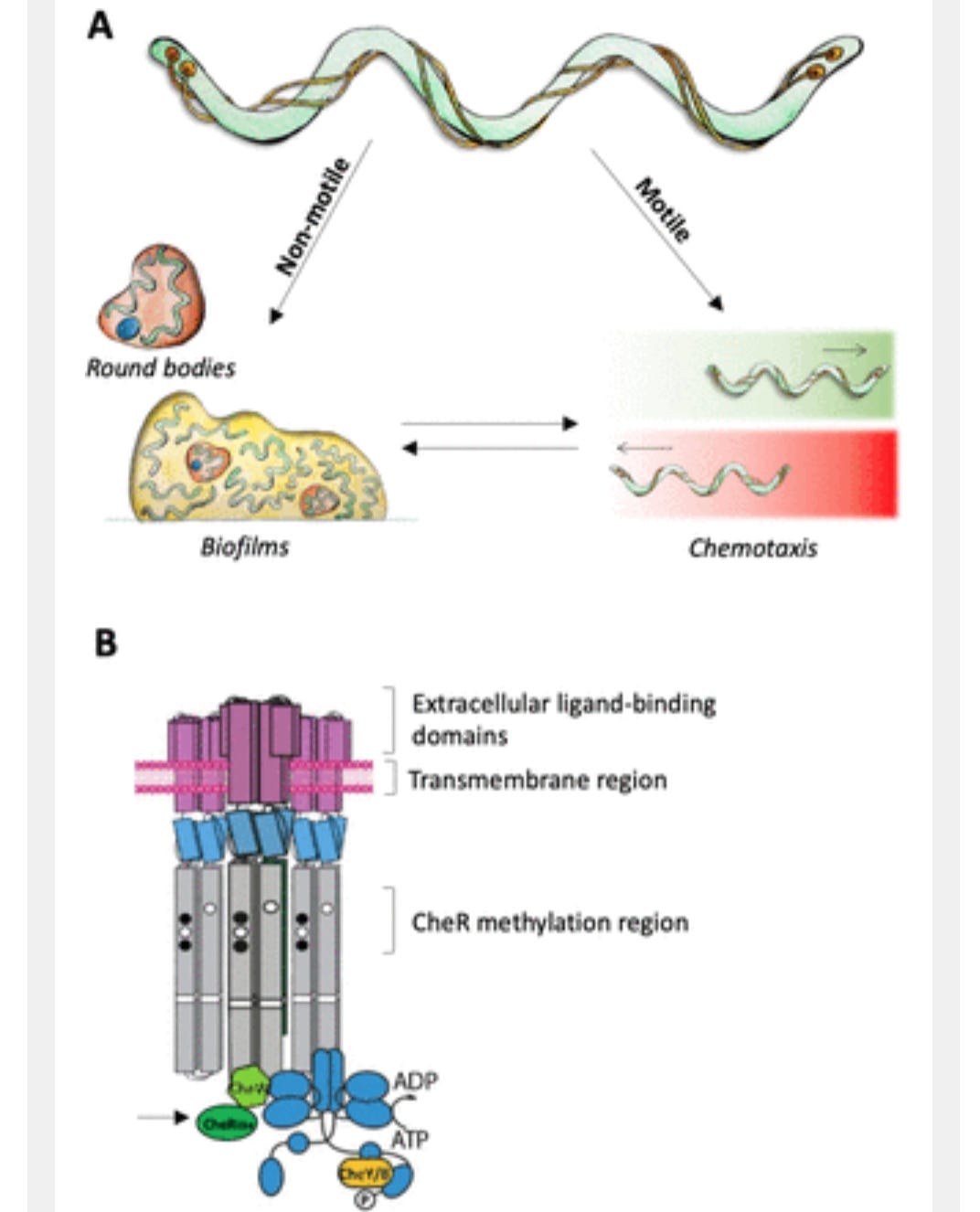A new class of protein sensor links spirochete pleomorphism, persistence, and chemotaxis
Pathogenic spirochetes can alter their morphologies and behaviors to infect and survive within their hosts. Previous reports demonstrate that the formation of so-called ‘round bodies’ and biofilms, and chemotaxis are involved in spirochete pathogenesis. Here, in the spirochete Treponema denticola, we report a direct link between these cellular states that involves a new class of protein sensor (CheWS) with hitherto unclear function. Using cryo-EM methods, protein modeling, bioinformatics, genetics methods, and behavioral assays we demonstrate that spirochetes regulate these behaviors in response to the small molecule s-adenosylmethionine (SAM) via a SAM sensor that is anchored to chemotaxis arrays. CheWS influences chemotaxis, biofilm and round body formation under nonstressed conditions by a novel sporulation-like mechanism. Taken together, we establish an improved model for round body formation, we discovered a direct link between this SAM sensor and changes in cellular states, as well as characterized a new sensor class involved in chemotaxis.
Introduction
Sensory systems allow microbes to adapt to and thrive in their environment. By sensing stimuli through ligand-specific proteins, bacteria can find nutrients and avoid toxic moieties, evade predators, adapt to their hosts or symbionts, and restructure their micro-environment. During these processes, bacteria often change their physiologies accordingly. For free-living bacteria, they allow the cells to find sources of food and withstand ecological changes1. For bacterial pathogens, these systems can be critical for infecting hosts tissues and sustaining infections2,3. Although numerous strides have been made in understanding how the underlying molecular networks that facilitate these sensory systems operate, many key players or mechanisms remain unclear.
For many bacteria, the appropriate response to some stimuli is to enter a non-motile cellular state. For example, when the environment is unfavorable, bacteria can form non-motile pleomorphic states and biofilms that protect the cells from external stresses4–6. Pleomorphism describes the ability of microbes to alter their morphology in response to external conditions. When cells form biofilms, they cluster together and embed themselves in an extracellular matrix that offers physical protection from the environment. In pathogenic spirochetes such as Treponema denticola (Td), a causative agent of periodontal diseases2 and linked to Alzheimer’s disease7,8 and specific cancers9, it is established that specific pleomorphic states and biofilm formation are involved in host colonization and infection persistence (Fig. 1A)5,10. These pleomorphic states are called round bodies, a form of non-motile cell with minimized metabolic activity that are specific to spirochetes10. These structures form as a response to stress to physically protect cells from the environment, and a single round body may contain several spirochete cells4,6,11. These cells remain in a dormant state until the environment becomes favorable again and the cells can resume normal growth and behaviors12. Round body formation can be induced by a wide range of stresses including starvation4, hypotonic treatment13,14, osmotic pressure6, growth to stationary phase15, and antibiotic exposure15. In fact, round bodies can withstand otherwise lethal doses of some antibiotics15,16, which may account for recurrence of spirochetal infections after antibiotic treatments17. Round bodies are also the dominant cellular form in mature spirochete biofilms17, spinal fluid12, and brain tissues from Alzheimer’s patients18. In addition to offering stress protection, spirochete biofilms are also formed in response to interactions with microbial symbionts and host molecules19,20. https://www.biorxiv.org/content/10.1101/2022.01.11.475842v1.full




